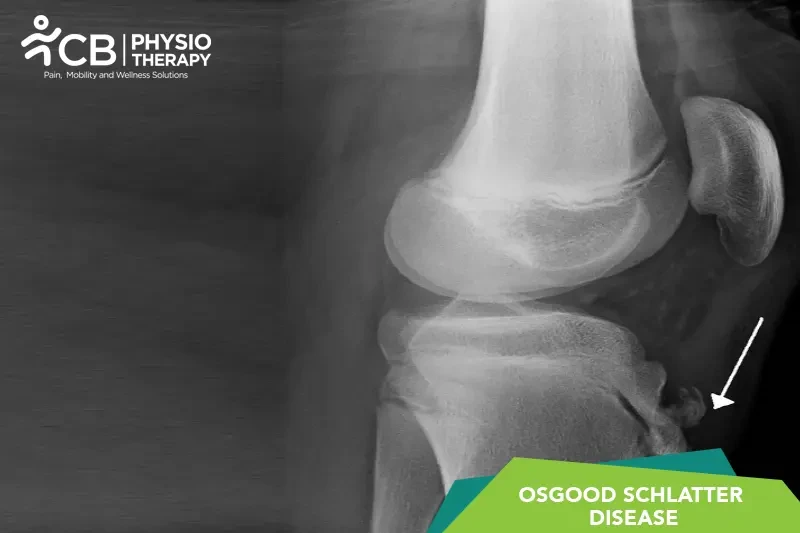1: Rest:Rest allows the inflammation and irritation at the tibial tuberosity to settle.
2: Ice Therapy:Applying ice packs to the affected area for 15-20 minutes several times a day can help reduce pain and inflammation.
3: Taping or Bracing:Patellar straps or taping techniques can offload the patellar tendon and reduce stress on the tibial tuberosity during activities.
4: Activity Modification:Modify or temporarily stop high-impact sports and activities to prevent further stress on the knee.
5: Transcutaneous Electrical Nerve Stimulation (TENS):a: Purpose: TENS provides pain relief by delivering low-voltage electrical currents through the skin. It helps stimulate nerves and may reduce pain signals sent to the brain.
b: Application: Electrodes are placed around the painful area, and patients typically feel a tingling sensation. TENS is especially useful for managing pain during activities.
6: Ultrasound Therapy:a: Purpose: Therapeutic ultrasound uses sound waves to generate deep heat within tissues, promoting blood flow and aiding in the healing process. It can help reduce inflammation and pain in the affected area.
b: Application: A gel is applied to the skin over the tibial tuberosity, and a transducer is moved in a circular motion to deliver the ultrasound waves.
7: Interferential Current (IFC) Therapy:a: Purpose: IFC therapy uses medium-frequency electrical currents that intersect to provide deeper penetration and more effective pain relief compared to TENS. It’s often used to reduce pain and inflammation in deeper tissues.
b: Application: Electrodes are placed around the painful area, and the patient feels a comfortable, deep pulsing sensation.
8: Low-Level Laser Therapy (LLLT):a: Purpose: LLLT, also known as cold laser therapy, uses low-intensity laser light to reduce pain and inflammation, promote tissue healing, and accelerate recovery.
b: Application: The laser device is applied over the tibial tuberosity and surrounding tissues. The treatment is non-invasive and painless.
9: Electrical Muscle Stimulation (EMS):a: Purpose: EMS involves stimulating muscle contractions using electrical currents. It can help maintain muscle strength and improve blood circulation, which may aid recovery.
b: Application: Electrodes are placed over the quadriceps to stimulate muscle activity, which can be beneficial in maintaining strength during periods of reduced activity.
10: Iontophoresis:a: Purpose: Iontophoresis involves delivering anti-inflammatory medications (like corticosteroids) through the skin using a mild electrical current. It helps reduce localized inflammation and pain.
b: Application: A medicated pad is placed over the painful area, and a mild current helps drive the medication into the tissues.
11: Stretching Exercises:a: Hamstring Stretching: Tight
hamstrings can increase stress on the knee, so regular stretching is essential. Example: Hamstring stretch with the leg extended while sitting or lying down.
b: Quadriceps Stretching: Stretching the quadriceps reduces tension on the patellar tendon and tibial tuberosity. Example: Standing quad stretch by pulling the ankle toward the buttocks.
c: Iliotibial (IT) Band Stretching: Stretching the IT band helps improve knee mechanics. Example: Cross-legged IT band stretch while standing.
12: Strengthening Exercises:a: Quadriceps Strengthening: Example: Straight-leg raises, isometric quad sets (tightening the thigh muscles while the leg is straight), and wall squats with minimal knee flexion.
b: Hamstring Strengthening: Example: Hamstring curls using a resistance band or weight machine.
c: Hip and Core Strengthening: Strengthening the hips and core muscles enhances stability and reduces stress on the knee. Example: Glute bridges, clamshells, and side leg raises.
13: Improving Flexibility and Range of Motion:a: Dynamic Stretching: Incorporating gentle, controlled dynamic stretches before activities to maintain joint flexibility.
b: Manual Therapy: The physiotherapist may use techniques like massage or mobilization to improve muscle flexibility and tissue pliability.
14: Progressive Return to Activity:a: Gradual Return: Once symptoms improve, a gradual return to sports is advised. The intensity and duration of activities should be increased slowly to avoid recurrence.
b: Sports-Specific Training: Focus on regaining functional movement patterns needed for specific sports, such as jumping and cutting.
15: Footwear and Orthotics:Proper footwear or insoles that provide good shock absorption and support may help reduce knee stress.
